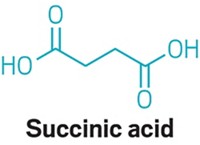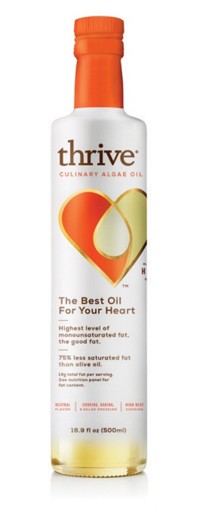Advertisement
Grab your lab coat. Let's get started
Welcome!
Welcome!
Create an account below to get 6 C&EN articles per month, receive newsletters and more - all free.
It seems this is your first time logging in online. Please enter the following information to continue.
As an ACS member you automatically get access to this site. All we need is few more details to create your reading experience.
Not you? Sign in with a different account.
Not you? Sign in with a different account.
ERROR 1
ERROR 1
ERROR 2
ERROR 2
ERROR 2
ERROR 2
ERROR 2
Password and Confirm password must match.
If you have an ACS member number, please enter it here so we can link this account to your membership. (optional)
ERROR 2
ACS values your privacy. By submitting your information, you are gaining access to C&EN and subscribing to our weekly newsletter. We use the information you provide to make your reading experience better, and we will never sell your data to third party members.
Business
In The Pink
Seemingly lucrative fish-coloring business proves hard for newcomers to crack
by Michael McCoy
October 29, 2007
| A version of this story appeared in
Volume 85, Issue 44

IN 2004, British sugar producer Tate & Lyle and Igene Biotechnology, a small U.S. company, jointly opened a plant in Selby, England, making astaxanthin, a carotenoid that gives salmon its characteristic pink hue. The plant employed a novel fermentation technique intended to challenge the traditional chemical synthesis used to produce the pigment.
Last month, the joint venture shut the plant down. Stanley Musesengwa, Tate & Lyle's chief operating officer, said the combination of escalating raw material and energy prices and falling selling prices "means that production of astaxanthin at the Selby site is no longer commercially viable."
The failed plant, in which the partners invested $25 million, is one of a string of projects launched by enterprising companies intent on breaking the stranglehold synthetic chemical makers have on astaxanthin production.
Astaxanthin is added to the food of farm-raised salmon and trout to give their flesh the same hue that wild fish acquire from eating astaxanthin-rich algae. Scientists at a Roche plant in Sisseln, Switzerland, pioneered synthetic production in 1990. DSM acquired the plant in 2003.
By the late 1990s, aquaculture was taking off and other firms began to eye the astaxanthin market. During 1998 and 1999, BASF started synthetic production in Germany, Igene and Archer Daniels Midland (ADM) opened fermentation facilities in North America, and Cyanotech and Aquasearch began extracting astaxanthin from algae grown in ponds in Hawaii.
With 10% astaxanthin formulas selling for close to $250 per kg, the market was enticing. Routes other than traditional chemical manufacturing were especially appealing given the complexity of the synthesis. BASF says its production process takes 14 steps, which is the longest synthesis sequence the company conducts for a single substance. In contrast, when production is by fermentation or extraction from algae, a living organism handles the messy molecule-building details.
Yet, today, chemical synthesis still dominates astaxanthin production, a business that is worth more than $150 million per year worldwide. Stewart Anderson, DSM's senior product manager for carotenoids and fat-soluble products, says his company is the market leader, and competitors don't deny the claim.
Anderson notes that DSM, a fermentation practitioner in its antibiotics and fine chemicals businesses, has produced astaxanthin by fermentation, still holds patents in this area, and is constantly scoping out alternative production routes. "We have not evaluated one that would compel us to change our current setup," he says.
A CLUE TO the effectiveness of the synthetic route can be found in a 2004 study that BASF conducted of the environmental impact of the three astaxanthin production techniques. In the study, known as an eco-efficiency analysis, the company determined that chemical synthesis is the most environmentally benign route. It concluded that the alternative approaches are handicapped primarily by their high energy consumption.
A good environmental profile doesn't necessarily translate into good economics, but the connection seems to hold in this case. As Martin Jager, head of global nutrition marketing in BASF's fine chemicals division, says, "It would appear that the eco-efficient process is also the more economic one."
Also bearing out the study's results, companies that extract astaxanthin from algae are pulling back from the aquaculture market and focusing on human health applications where they can sell a pharmaceutical-grade product for a higher price. Cyanotech, for example, has told investors that it is shifting its focus from animal nutrition to nutraceutical-type applications that take advantage of astaxanthin's high antioxidant activity.
DSM and BASF still face competition in the fish food business, however. DSM's Anderson notes that Chinese companies are marketing synthetic astaxanthin, while an Indian firm has begun test-marketing the pigment.
ADM, meanwhile, continues to produce yeast-derived astaxanthin at its plant in Decatur, Ill. Kris Lutt, general manager of ADM's specialty feed ingredients division, acknowledges that the company is not immune to rising raw material costs or falling prices. But he says the Decatur site's highly integrated nature "helps make ADM a cost-competitive producer."
Even Igene hasn't given up hope. President Stephen F. Hiu says Igene will continue in the business without Tate & Lyle, possibly through a contract manufacturing arrangement with another company. Hiu claims that the Selby plant successfully manufactured large quantities of astaxanthin before falling victim to a new sugar policy in Europe that raised prices for the raw material.
BASF's Jager warns that astaxanthin sells for $140 to $170 per kg today, a far cry from its past heights. Hiu remains undeterred and says Igene will once again ferment astaxanthin at the same scale on which it operated in England. "The manufacturing process is fine," he says. "It's just a matter of where you do it and with whom."





Join the conversation
Contact the reporter
Submit a Letter to the Editor for publication
Engage with us on Twitter